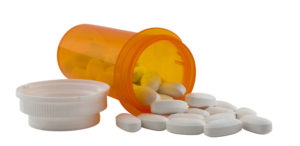 Hair loss is a huge concern among adults, especially as they age. This week the NY Times printed an article about an inexpensive medicine that works amazingly well to restore hair. The treatment is to take a small dose of minoxidil daily and this results in hair growth.
Hair loss is a huge concern among adults, especially as they age. This week the NY Times printed an article about an inexpensive medicine that works amazingly well to restore hair. The treatment is to take a small dose of minoxidil daily and this results in hair growth.
This is the same hair loss treatment drug that is typically applied directly to the scalp (it's the active ingredient in Rogaine). But taken as a very low-dose pill it works even better. Taken in this low dose pill form is taking it "off-label" , which is a common practice in dermatology. Minoxidil is also an anti-hypertensive medicine (at higher doses).
The before and after photos in the article are fabulous - from very thin to lush, thick hair.
Excerpts from the New York Times: An Old Medicine Grows New Hair for Pennies a Day, Doctors Say
The ads are everywhere — and so are the inflated claims: Special shampoos and treatments, sometimes costing thousands of dollars, will make hair grow. But many dermatologists who specialize in hair loss say that most of these products don’t work.
But there is a cheap treatment, he and other dermatologists say, costing pennies a day, that restores hair in many patients. It is minoxidil, an old and well-known hair-loss treatment drug used in a very different way. Rather than being applied directly to the scalp, it is being prescribed in very low-dose pills.
Although a growing group of dermatologists is offering low-dose minoxidil pills, the treatment remains relatively unknown to most patients and many doctors. It has not been approved by the Food and Drug Administration for this purpose and so is prescribed off-label — a common practice in dermatology.
Minoxidil, the active ingredient in Rogaine, a lotion or foam that is rubbed on the scalp, was first approved for men in 1988, then women in 1992, and it is now generic.
But dermatologists say the lotion or foam is not particularly effective for some patients, perhaps because they stop taking it. It has to get on the scalp itself — and hair gets in the way. Many, especially women, stop using it because they dislike leaving the sticky substance in their hair.
Dr. Rodney Sinclair, a professor of dermatology at the University of Melbourne in Australia, had a patient with female pattern baldness. The hair on top of her head had thinned, and she hated the way it looked. Unlike what happened with most of his patients, Rogaine worked for her, but she developed an allergic rash on her scalp from the drug. Yet if she stopped taking it, her hair would thin again.
“So I was stuck,” Dr. Sinclair said. “The patient was very motivated, and the one thing we knew was that if a patient has an allergy to a topically applied medicine, one way to desensitize is to give very low doses orally.”
To do that, Dr. Sinclair tried cutting minoxidil pills into quarters. To his surprise, the low dose made her hair grow but did not affect her blood pressure, the original purpose of the higher-dose drug.
He subsequently lowered the dose more and more until he got down to effective doses of one-fortieth of a pill and began routinely prescribing the drug. That first patient still takes it.
At a meeting in Miami in 2015, Dr. Sinclair reported that low doses of minoxidil prompted hair growth in 100 successive women.
Recently, a rising number of hair-loss dermatologists have been giving the low-dose pills to patients with male and female pattern hair loss, a normal occurrence with age.
If hair loss is too severe, minoxidil will not help, Dr. Aguh warned. “It will not work, for example, if a man is mostly bald, with a shiny scalp. There is nothing to restore.” She added that the ideal patient is not completely bald but has lost enough hair that even a casual observer would notice.
